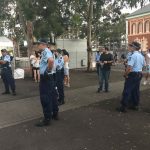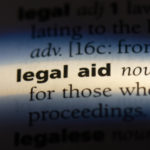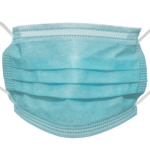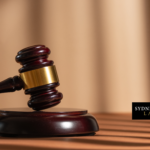Domestic Violence in Indigenous Communities: It’s Time for Change
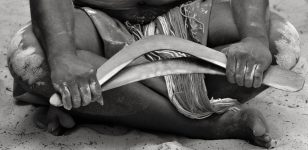
The recent episode of Four Corners that exposed the brutal death of Aboriginal woman Lynette Daley, was chilling to watch.
For some, it was simply another example of a callous death suffered by a female at the hands of men. For many, it confirmed that in this global epidemic of violence against women, Australians are doing the right thing by continuing to highlight the issue and pressuring governments for appropriate funding to address the problem.
But is it really enough? Aboriginal women are still falling – at an alarming rate and in increasingly horrifying ways – through the cracks of a tired and broken system.
Statistics suggest that Aboriginal women are 34 times more likely to suffer domestic violence than non-indigenous women, and almost 11 times more likely to die at the hands of their partners. But what are we actually doing to solve the problem?
Many Aboriginal women who suffer family violence don’t have access to emergency services and crisis centres.
Most experience shock, guilt and shame, but for Indigenous women there can be added barriers, too. Perpetrators can be powerful male leaders within their community. Sometimes, if the violence has been systemic in the community and the victim has suffered for many years, they don’t know to expect anything else or to seek help.
And, there are also high levels of suspicion and mistrust between Indigenous Australians and police, courts and the government.
Many Aboriginal women are apprehensive about a system which has perpetrated atrocious acts of injustice against their people – using them servants and sex slaves in the early period of colonisation, and more recently forcibly removing children from their homes.
And while domestic violence is good reason for temporarily re-homing children, Aboriginal and Torres Strait Islander children in violent homes are more likely to be separated from their mothers, placed in out-of-home care, and often with non-Indigenous carers, which has a significant impact on the way they cope with the situation, and with their lives thereafter.
Police are often the first contact point for victims seeking help.
Domestic violence survivor Lani Brennan says that it took four years for police to take her partner into custody, from the time she made a complaint, despite the fact that records show he was arrested 44 times during that period, and that she had reached out to police on several occasions, was hospitalised a number of times as a result of the assaults.
Lani Brennan believes police racially discriminated against her, an issue that was also raised when another Indigenous female Julieka Dhu died in police custody.
The system failed both of these women, and it also failed Lynette Daley.
They are not the first, and sadly, it is unlikely they will be the last.
But when do we say ‘enough’?
We must also consider the heartbreaking plight of a 10-year old Indigenous girl who felt her life so miserable and worthless that she ended it herself in the remote community of Looma in the WA Kimberley Region earlier this year. Reports say the girl’s sister also committed suicide about a year ago.
What gives a ten-year old girl, in Australia, in the year 2016, such a sense of helplessness and hopelessness that she finds no reason to live?
It’s a question we may never know the answer to, but one report says the girl was a victim of domestic violence, suffering years of accumulated trauma and harm. She was in the care of relatives at the time of her death.
Many Aboriginal people are living in communities where unemployment, poverty, violence and drug and alcohol abuse are rife.
It’s time we changed that. Not just for the women, but for the children and the men too. Because the psychology and health experts have been telling us for years that the biggest predictor of violence or drug abuse is being brought up in an environment where it exists.
It’s projected that by the year 2021-22, violence against Aboriginal women will cost the nation an extraordinary $2.2 billion a year.
The moral cost: the lost lives, the impact on children, the destruction of communities – is not so easily quantifiable.
To that end, we must ensure that the lives of Julieka Dhu, Lynette Daley and the thousands of other Aboriginal women just like them who have been mistreated by partners or family members, and also by the system that was supposed to protect them, are not in vain.
The NSW Attorney General has asked the Director of Public Prosecutions to review Lynette Daley’s case, and anyone who watched the Four Corners program would have to agree that this woman deserves nothing less than justice.
In Western Australia, State Coroner Ros Fogliani is investigating several suspected suicides in the Pilbara and Kimberley. The Commissioner for Children and Young people said he would prioritise mental health for young people, and at a Federal level, the Indigenous Affairs Minister has promised to escalate the Aboriginal and Torres Strait Islander Suicide Prevention Evaluation project.
We can only hope that these government initiatives deliver some real insight into the issue, and information that will enable critical thinking about how to address this problem not just for Aboriginal people, but for all Australians.
The problem is both historical and ongoing – and it’s time for urgent solutions.
Receive all of our articles weekly
Author

Sonia Hickey

